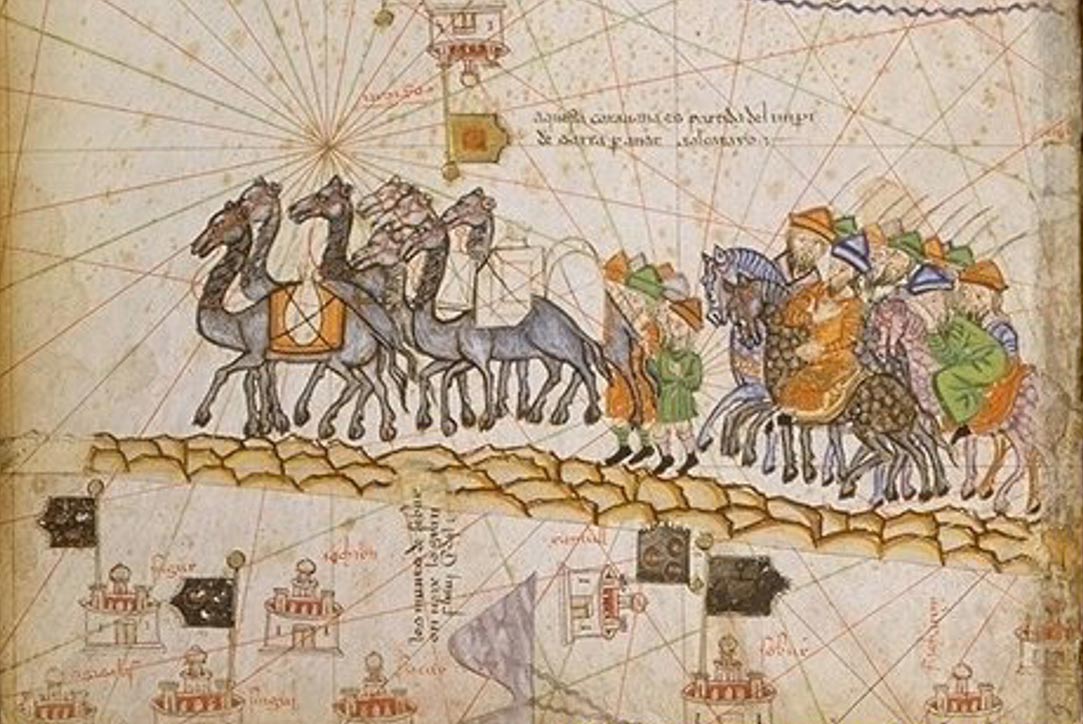Welcome Readers !
I am Sheerapthi Ramiya, 2nd Year MBA from Amrita School of Business, coming back with this week's read ! Hope my readers are doing well and I hope you enjoy :)
With Modern technology, a global exchange of goods, services and ideas can happen at the click of a button. Transfer of Information from one place to another anywhere around the globe takes merely a second with the help of digital information. You can now send or receive products from anywhere around the globe within days by a cargo plane or container ship. The speed and volume at which goods and information move across the world today is unprecedented in history. But global exchange itself order than we think. reaching back over 2000 years along a 8000 km stretch !
I have taken a historical path in the field of supply chain because it is important to know the roots and how it has developed over the ages. While we have incredibly advanced supply chain systems all around the world, it is likewise important to know how supply chains was established when it first started. Although the supply chain concept was coined in the 20th Century, The Silk Road is probably the first successfully implemented global supply chain in history on mankind on Earth. Hence understanding the international trade, participants, processes used, products/services traded, lead times, governments, opportunities, risks, and inter-border and intern-cultural issues will be beneficial to keep in mind while comparing today's global and virtual supply chains.
Some Exotics goods traded on the Silk Road
A Supply Chain expanding 8000km needs management and the Silk Road is no exception. From the Map we can see some how the Silk Road is connected from Asia all the way to Europe. The participants along the initial stages of the silk road included the Chinese, Yuezhi, Bactrians, Indians and Sogdians. Different groups fell and rose through the ages. Groups with military and political power were the ones that controlled the Silk Road. The main players of the Supply Chain were merchants and agents. Can you believe this was the trade route that was established way back in the 1st century ?
The Silk Road in 1st Century
During the 11th to 14th centuries, Silk Road trade on the Western front (Persia to Istanbul) was mainly controlled by the Great Seljuk Empire. Trade diasporas (Community Merchants living along the Silk Road) were formed such as Sogdians in Tang China, Armenians in Safavid Iran, and Jews in West Europe. Despite being open since the 9th century, maritime routes became more significant in the 16th century due to technological improvements in the sea transportation. The long sea trade was monopolized by the Iberians. After the 17th century, West Europe charter companies such as the English East India Company (EIC) and Dutch East India Company (VOC) operated as single connected distribution chains from producer to consumer. Similar integrated distribution function are provided by global supply chain service providers like UPS, FedEx and DHL.
According to history, few people have travelled the full length of the Silk Road. The routes used by the merchants were selected on factors such as political stability and topography. The Silk Road lies on the most challenging geography of the world in terms of endless desert and high and rugged mountain ranges. The extreme climate conditions, large distances, lack of governmental administrations and banditry wee the main problems for travelers. Travelers tend to join caravans to benefit in terms of safety and group caravanning. The common mode of transportation used depended on the stage of the journey. Camels were used in deserts, Yaks in colder regions, Horses and Mules in the flat plains. The load of the goods was also another factor to consider for the mode of transportation. This hence contributes to transportation cost which also included freight price, road tolls and custom fees (In the 1st century by the way).
Merchants on the Silk Road
16th Century saw joint ventures between the merchants and the Portuguese. The contract dictated equal share of the cargo space aboard and expenses of the voyage. Here money was handed out without undertaking the actual journey. The century old practice can be related to the allocation strategy of today's global cargo carriers. Its the 17th century and the Silk Road Supply Chain saw some massive transportation and distribution changes. Commodities were now traded via multiple agents in city states and sea ports. By the early modern era of the Silk Road, consumers and producers were now linked to a single agent. They now operated without the involvement of the middlemen which. increased overall cost efficiency. Merchants at this stage did not have to travel with their goods anymore. It is interesting to also note the usage of supply chain contracts were used in the beginning of the 6th century.
These supply chains were significant in producing, distributing, and selling a diverse set of producers to the vast geographic region surrounded the Silk Road, from China to the Balkans and Europe for a long period in human history. The journey of the Silk Road does not end here as there is a lot more that happened to its development and its downfall. One can also say projects are being undertaken to bring the Silk Road back to life after many centuries !
I hope reading the history of supply chains and logistics does give some perspective on how it all evolved and how it exists to this date. If you liked this blog and would like more blogs on the supply chains during the medieval times, check out my other blogs mentioned below!
If you like to know more on Logistics was taken care of during the age of Alexander and his great Conquest, click the link below!
If you would like to know more on the Logistics of the Kurukshetra War, click the link below !








No comments:
Post a Comment